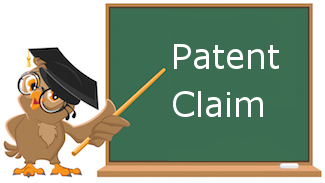There has been a belief in the market that the process of obtaining a patent is highly expensive which new born startups and innovators cannot bear – It’s a myth. The process of applying for patents, if righty planned, can be cost-effective.
Under the Indian laws the procedure of filing of patent is as below:
STEP 1: Write about inventions (idea or concept) with each and every detail. Collect all information about your Invention such as:
- Field of Invention
- What does the Invention describe
- How does it work
- Benefits of Invention
STEP 2: It must involve a diagram, drawing and sketch explains the Invention. They play an important role in patent applications.
STEP 3: To check whether the Invention is patentable subject or not. Not all inventions can be patentable, as per the Indian Patent Act there are some inventions which have not been declared patentable (inventions are not patentable).
STEP 4: Patent Discovery
- The invention must be novel.
- The Invention must be non- obvious.
- The Invention must have industrial applications.
STEP 5: File Patent Application
If the invention is at a very early stage in research and development for Invention, then one can go for a provisional application. It offers the following benefits:
- Filing date.
- 12 months time for filing full specification.
- Lesser cost.
After filing a provisional application, you secure the filing date, which is very important in the patent world. You get 12 months to come up with the complete specification; your patent application will be removed at the end of 12 months.
STEP 6: Publication of the application
Upon filing the complete specification along with the application for the patent, the application is published 18 months after the first filing. The patent application is usually published early as a one-month form request.
STEP 7: Request for Examination
The patent application is scrutinized only after receiving a request for an RFE examination. After receiving this request, the Controller gives your patent application to a patent examiner who examines the patent application such as the various patent eligibility criteria:
- Patent subject
- Newness
- Lack of clarity
- Inventory steps
- Industrial application
- By enabling
The examiner makes the first examination report of the patent application upon a review for the above conditions. This is called patent prosecution. Everything that happens for a patent application before the grant of a patent is usually called patent prosecution.
STEP 8: Answer the objections
Most patent applicants may receive some objections based on the examination report. The best thing is to analyze the examination report with the patent professional (patent agent) and react to the objections in the examination report. Inventors and patent agents create and send a test response that tries to prove that their Invention is indeed patentable and meets all patent criteria.
STEP 9: Clearance of objections
The Controller and the patent applicant is connected for ensuring that all objections raised regarding the invention or application is resolved and the inventor has a fair chance to prove his point and establish novelty and inventive steps on other existing arts. After receiving a patent application in order for grant, it is the first grant for a patent applicant.
STEP 10: Patent Grant
Once all patent requirements are met, the application will be placed for the grant. The grant of a patent is notified in the Patent Journal, which is published periodically.
The following factors can be considered by the creator of the invention to save the cost of patent grant during the process of filing for the patent:-
- Decide about the nation for patent filing before filing of the application.
- Prefer e-filing services.
- Consider translation costs.
- Emphasize variations in fee.
- Use PCT (Patent Cooperation Treaty).
- Be careful while selecting search and examination authority.
- File request for examination at the time of filing of the application.
- Keep supporting or essential documents in order.
- Emphasize reducing the maintenance fee.
- Focus on strategic abandonment.
The obtaining and maintaining process of a patent is a difficult process which results in strain on the finance teams as well as its resources of the firm. Hence, it is a vital step to develop cost-effective strategies that support the business goals in the best possible way.
Subscribe to our monthly newsletter here and read all our blogs here



